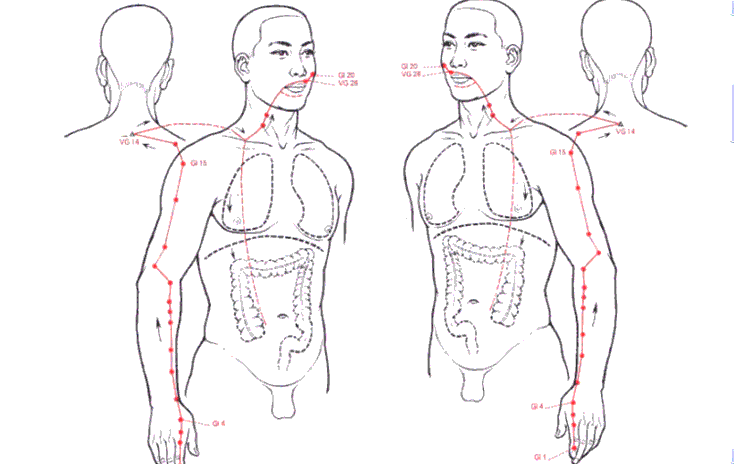February 20, 2024 - The Chinese Clock, the Large Intestine Channel & Insurance
The Chinese Clock & How It Helps Us In Treatment
Do you notice that you have a lull in energy at a certain time every day; or a time that you wake up at night every night? This can tell us more about deficiencies you might have in certain organ systems in East Asian Medicine, helping us diagnose and treat.
By paying attention to the clock, you can take advantage of certain activities. There are optimal times for certain activities.
The clock shows an optimal time for each organ and an opposite or the low point for that organ system. For instance, the optimal time for the Stomach and Spleen is 7-9a and 9-11a - a great time to eat as it is the optimal time for the two organs responsible for digestion and absorption of food.
If you always wake up in the middle of the night between 1-3a, this might mean a Liver issue. If you always wake up between 3-5a, then we'd look at the Lung.
Here is a great in-depth article if you are interested in learning more https://www.tcmwellnessprinciple.com/blog/chinese-body-clock
The Chinese Clock
The Large Intestine Channel
Last month we started with the Lung channel - you can go read about it here: https://www.nancyscheyer.com/nancynewsletter
The Lung channel starts on the inside of the body and ends at the end of the thumb; whereas the Large Intestine channel starts on the outside at the tip of the index finger and then goes inward. See image below.
From the tip of the index finger, it runs along the radial side of the index finger and passes through the space between the thumb and index finger at the most used point on the body - L.I. 4 - Hegu.
From here it runs up the lateral aspect of the forearm to the lateral aspect of the elbow at L.I.11 Quchi. From here it rises along the lateral aspect of the upper arm to the shoulder joint and crosses behind the shoulder to the depression between the scapular spine and the lateral & outer point of the collar bone.
From here it travels towards the middle of the spine at a point called Du 14 (directly below the spinous process of the vertebra of C7) where it meets the other five Yang channels. From the cervical spine, it enters the body and connects with the Lung and descends through the diaphragm to join with the Large Intestine.
Another branch ascends from cervical spine and goes along the side of the neck, passes through the cheek and enters the lower gums. From the gums the channel curves around the upper lip and crosses to the opposite side of the face.
The left channel travels to the right and the right channel travels to the left and ends at the side of the nose at L.I. 20 Yingxiang. At Yingxiang L.I. 20 the Large Intestine channel joins with the Stomach channel.
Large Intestine 4 - Hegu is the most used point on the channel. It is the Yuan-Source point of the Large Intestine, the Gao Wu Command point and the Ma Dan-yang Heavenly Star point. Its actions are:
· Regulates defensive qi and adjusts sweating
· Expels wind and releases the exterior
· Regulates the face, eyes, nose, mouth and ears
· Activates the channel and alleviates pain
· Induces labor
· Restores the yang
It is used in cases of colds, chills & fever, headache, eye issues, nasal congestion, toothache or pain in the lower jaw, and a lot more. It is specifically used in cases of prolonged labor and is contraindicated in pregnancy.
Hegu, L.I.4 is the single most important point to treat disorders of the face and sense organs.
Insurance Billing Soon
I am in the process of signing up with a few insurance companies. I am excited to be able to provide insurance billing for those of you who have coverage!
Regence is the first one for which I am being credentialed, with a few others coming as well.
If you know your health insurance provider covers acupuncture, please let me know so that I can look into being credentialed.

